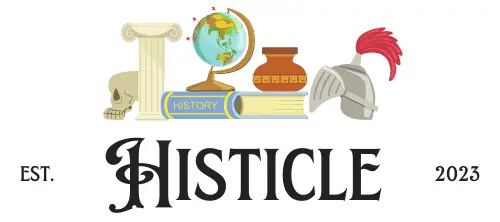
The comprehensive list of popes provided offers a detailed glimpse into the rich history of the papacy, spanning from the earliest days of Christianity to the present era.
Each entry includes the name of the pope, their years of service as the Bishop of Rome, commonly known as the pope, and their birthplace.
From Peter, the first pope, to the current pontiff, Francis, the list showcases the diverse origins and extensive timeline of papal leadership, shedding light on the varied backgrounds of those who have held one of the most influential positions in the Catholic Church.
List of Popes from 32 AD to Present
For more historical faith-based/inspirational content, check out my posts Saintly Heroine: 10 Fascinating Facts About Joan of Arc, Faith in Arms: 9 Legendary Warrior Saints Through the Ages, and List of Archbishops of Canterbury!

FAQs: List of Popes
Popes are chosen through a secretive election called a conclave, which involves the College of Cardinals, the highest-ranking church officials.
When the papacy becomes vacant, either due to the Pope’s death or resignation, cardinals from around the world gather in Vatican City.
The process has evolved significantly over centuries. Initially, Popes were selected by a combination of the clergy and laity of the Roman Church or by imperial decree.
However, in 1059, the selection of Popes was officially restricted to the cardinals, formalizing the conclave process.
During the conclave, cardinals are secluded and vote in a series of ballots until a candidate receives a two-thirds majority.
The process today is highly ritualized, with ballots burned after each vote.
If a vote is inconclusive, chemicals are added to produce black smoke from the Sistine Chapel’s chimney.
White smoke signals the election of a new Pope, followed by the famous announcement “Habemus Papam” (“We have a Pope”).
Over time, reforms have been introduced to accommodate changes in communication, travel, and the global nature of the Church, but the essence of the conclave remains a constant in the papal selection process.
The role of the Pope encompasses various responsibilities within the Catholic Church, including serving as the spiritual leader and supreme authority for Catholics worldwide.
As the Bishop of Rome, the Pope is considered the successor of Saint Peter and holds the highest office in the church hierarchy.
Among his duties are interpreting and safeguarding Church doctrine, promoting unity among Catholics, and providing pastoral guidance.
Additionally, the Pope represents the Church in diplomatic relations and plays a crucial role in promoting peace, justice, and humanitarian efforts globally.
References: List of Popes
“CATHOLIC ENCYCLOPEDIA: List of Popes.” www.newadvent.org, www.newadvent.org/cathen/12272b.htm.
“Papacy – List of Popes and Antipopes | Britannica.” www.britannica.com, www.britannica.com/topic/papacy/List-of-popes-and-antipopes.
“Popes, in Sequence [Catholic-Hierarchy].” www.catholic-Hierarchy.org, www.catholic-hierarchy.org/bishop/spope0.html. Accessed 12 Feb. 2024.
“Popes of the Catholic Church | USCCB.” www.usccb.org, www.usccb.org/popes. Accessed 12 Feb. 2024.
“The Holy Father – the Holy See.” www.vatican.va, www.vatican.va/holy_father/index.htm.
